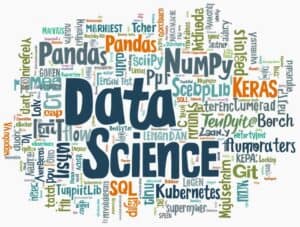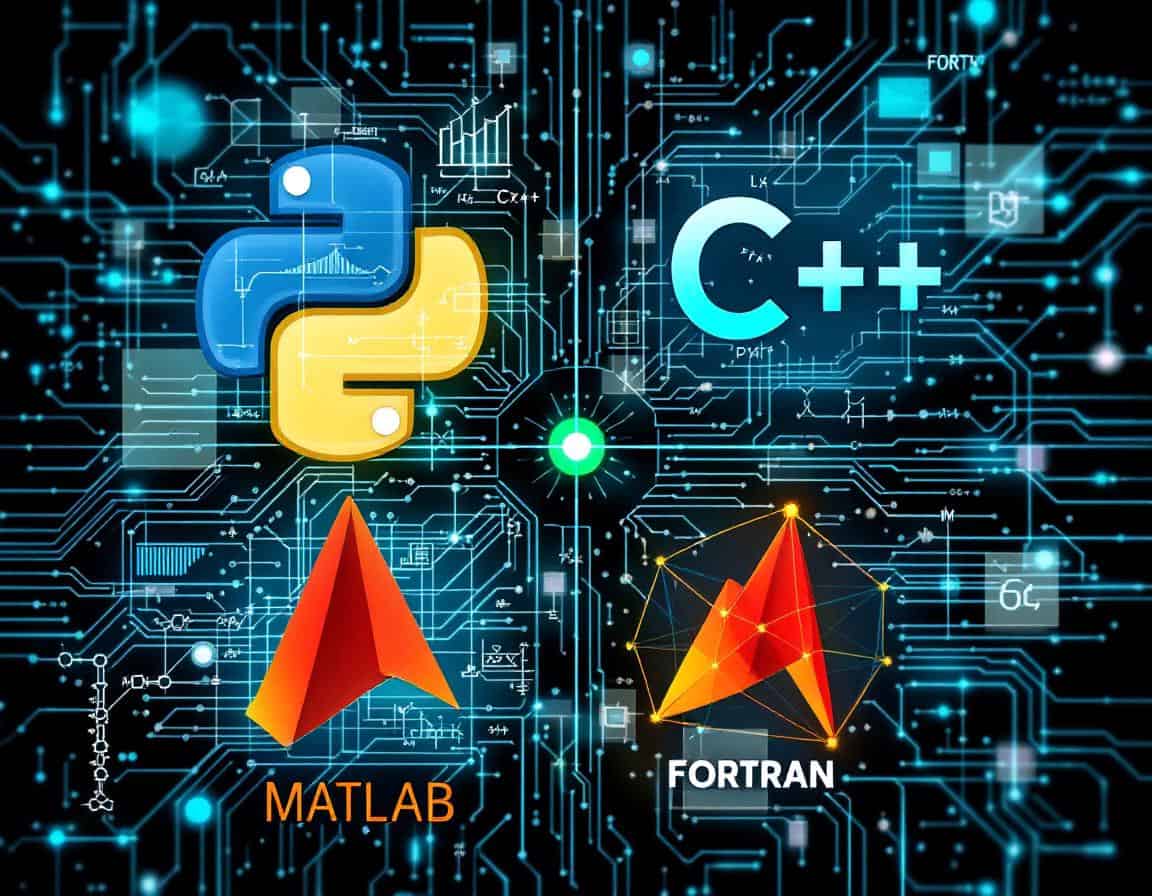In engineering, science, and research, the choice of programming language can significantly impact project outcomes and efficiencies. With over 8 million developers leveraging بايثون for tasks ranging from data analysis to machine learning, its popularity underscores a critical trend in software selection (Stack Overflow, 2023). This article presents a full list and comparison of programming languages suited for engineering and scientific applications, utilizing criteria such as performance, ease of use, available libraries, community support, and cost. We will also offer an overview of key programming languages like C++, MATLAB, and Fortran, while dissecting their strengths and weaknesses for specific engineering tasks.
النقاط الرئيسية

- Focus on performance for computationally intense tasks.
- programming Libraries enhance functionality; assess their availability.
- Consider ease of use for quicker project iterations.
- Community support influences problem-solving resources.
- Evaluate costs for tools and libraries used.
- Watch emerging languages for future capabilities.
Criteria for Comparison
Programming languages must be evaluated based on several criteria, which include readability, ease of use, and community support.
- Readability: it ensures that engineers can easily understand and modify code. For example, Python is celebrated for its clear syntax, allowing even novices to يخطب rapidly with complex tasks. Furthermore, extensive documentation and community forums bolster تجربة المستخدم, making troubleshooting and collaborative problem-solving more effective.
- Performance and computational efficiency: languages such as C and C++ provide supreme speed and efficiency, making them ideal for time-sensitive engineering applications. In contrast, interpreted languages like Python may lag in raw performance but offer superior ease for prototyping and experimenting. A performance comparison can be seen in simulations where C++ might execute 10x faster than Python in certain contexts, as per benchmarks in العنصر المحدود analysis.
- Availability of libraries and toolkits for the specific task: it dramatically influences a language’s utility in scientific computing. A language rich in domain-specific libraries can facilitate rapid development. For instance, R has numerous packages for statistical analysis, while ماتلاب provides extensive functions for linear algebra, enabling engineers to focus on problem-solving rather than coding essentials.
- Large online community: for a complex programming language, a vast pool of collective knowledge, makes easier to find solutions to obscure problems and get help with difficult concepts. This active community often translates into more readily available learning resources, such as tutorials, documentation, and example code, which can significantly shorten the learning curve. Furthermore, a vibrant community usually means a richer ecosystem of third-party libraries and tools, along with faster bug fixes and updates for both the language and its packages.
نصيحة: check for the latest library updates that may enhance functionality or optimization, as they can significantly alter programming language utility.
نصيحة: when choosing, consider project timelines and performance requirements for each step. A mixed solution can be beneficial, such as prototype in Python and transition to C++ if needed for production.
Performance Benchmarks for Typical Engineering and Scientific Computations

When assessing programming languages for engineering and scientific computations, key performance metrics include execution speed, memory usage, and parallel processing. C and C++ excel in execution speed due to efficient memory access, making them ideal for real-time simulations, while Python, though versatile, generally performs slower in numerical tasks unless optimized with libraries like NumPy. For example, optimized C can outperform Python in matrix multiplication by nearly 10x. Emerging languages like Julia and Rust offer strong performance in numerical computing and memory safety, respectively.
Because performance depends primary on specific applications, and specific libraries can change performance significantly, we have chosen to only rate from * to *** this parameter.
Emerging Programming Languages and Future Trends

Emerging programming languages like Julia or Rust are significantly influencing technology and engineering. Julia excels in numerical computing with high performance and user-friendly syntax, experiencing a 50% growth in scientific communities since 2020. Rust enhances safety and performance in systems engineering, attracting companies like Boeing and Ford to reduce runtime errors. Swift, particularly with Swift for TensorFlow, offers efficient data manipulation for machine learning, reportedly reducing training time by up to 30% compared to traditional Python libraries.
نصيحة: consider exploring hybrid solutions that combine the strengths of multiple languages, such as using Python for data analysis and Julia for numerical computation, to optimize project outcomes, javascript/D3 for graphical summary.
| Language | Primary usages | الايجابيات | سلبيات | Estimated total additional libraries | Estimated scientific libraries | Community & Practitioners | Estimated Speed for Complex Math on Large Data | Specificities |
|---|---|---|---|---|---|---|---|---|
| بايثون | Data science, Machine learning, Scientific computing, Web development | Easy to learn and use, vast number of libraries (e.g., NumPy, Pandas, SciPy, Matplotlib), large and active community, general-purpose capabilities, good for scripting and automation. | Slower speed for very CPU-intensive tasks compared to compiled languages (though C integrations help), Global Interpreter Lock (GIL) can limit true parallelism for CPU-bound tasks, higher memory consumption. | 500,000+ (from PyPI) | 20,000+ (core scientific stack like SciPy, Pandas, scikit-learn, plus specialized tools) | *** | ** (*** with optimized libraries like NumPy/Cython) | Interpreted, dynamically typed, object-oriented, strong for integrating different systems, extensive documentation. |
| R | Statistical computing, Data analysis, Data visualization | Specifically designed for statistics, vast array of packages for statistical modeling and visualization (CRAN), powerful graphics capabilities, strong community in academia and research. | Steeper learning curve for those not from a statistical background, can be slower for general-purpose programming and some large-scale computations, memory management can be an issue with very large datasets. | 20,000+ (from CRAN, Bioconductor adds thousands more for bioinformatics) | 18,000+ (most of CRAN is domain-specific) | *** | ** (optimized for statistical operations, can be slower on general math than some others). | Interpreted, array-oriented, functional programming features, designed around data objects like vectors, matrices, data frames. |
| Julia | Scientific computing, High-performance numerical analysis, Machine learning | High performance (approaching C/Fortran), designed for scientific computing, easy syntax (similar to Python/MATLAB), strong interoperability with other languages, built-in parallelism, multiple dispatch. | Smaller community and ecosystem compared to Python or R (though growing rapidly), "time-to-first-plot" issue (initial compilation lag for functions/packages), still maturing in some areas. | 10,000+ (registered packages) | 5,000+ (strong focus on scientific domains) | ** | *** | Dynamically typed with optional type annotations, JIT (Just-In-Time) compiled, designed for parallelism and distributed computing, multiple dispatch. |
| ماتلاب | Numerical computing, Engineering simulations, Algorithm development, Data visualization | Extensive built-in mathematical functions and toolboxes for various engineering and scientific domains, integrated development environment (IDE) tailored for numerical work, high-quality plotting capabilities, good for matrix operations. | Proprietary and expensive (licenses for base and toolboxes), can be slower than compiled languages for non-vectorized operations or general-purpose tasks, resource-intensive. | 5,000+ (combining official toolboxes, often dozens of... |
لقد قرأت 33% من المقال. الباقي لمجتمعنا هل أنت عضو بالفعل؟ تسجيل الدخول
(وأيضًا لحماية المحتوى الأصلي لدينا من روبوتات الكشط)
مجتمع الابتكار العالمي
تسجيل الدخول أو التسجيل (100% مجاناً)
اطلع على بقية هذه المقالة وجميع المحتويات والأدوات الخاصة بالأعضاء فقط.
فقط المهندسون والمصنعون والمصممون والمسوقون الحقيقيون المحترفون.
لا روبوت، ولا كاره، ولا مرسل رسائل غير مرغوب فيها.











متاح للتحديات الجديدة

مهندس ميكانيكي، مشروع، هندسة العمليات أو مدير البحث والتطوير
متاح لتحدي جديد في غضون مهلة قصيرة.
تواصل معي على LinkedIn
تكامل الإلكترونيات المعدنية والبلاستيكية، التصميم مقابل التكلفة، ممارسات التصنيع الجيدة (GMP)، بيئة العمل، الأجهزة والمواد الاستهلاكية متوسطة إلى عالية الحجم، التصنيع المرن، الصناعات الخاضعة للتنظيم، شهادات CE وFDA، التصميم بمساعدة الحاسوب (CAD)، Solidworks، الحزام الأسود من Lean Sigma، شهادة ISO 13485 الطبية
نحن نبحث عن راعي جديد
هل شركتك أو مؤسستك متخصصة في التقنية أو العلوم أو الأبحاث؟
> أرسل لنا رسالة <
احصل على جميع المقالات الجديدة
مجاني، لا يوجد بريد عشوائي، ولا يتم توزيع البريد الإلكتروني ولا إعادة بيعه
أو يمكنك الحصول على عضويتك الكاملة -مجانًا- للوصول إلى جميع المحتويات المحظورة >هنا<
منشورات ذات صلة
تقييم بيئة العمل المريحة
أمر التغيير الهندسي (ECO): أفضل الممارسات لتقليل الاضطراب والتكلفة
من المختبر إلى السوق: دور مرحلة الإنتاج التجريبية
أكثر من 45 حيلة معرفية أخرى للألعاب والتسويق: النفسية والمشاركة
أكثر من 45 حيلة في العلوم المعرفية للألعاب والتسويق: النفسية والمشاركة
أحدث المنشورات وبراءات الاختراع حول الزيوليت